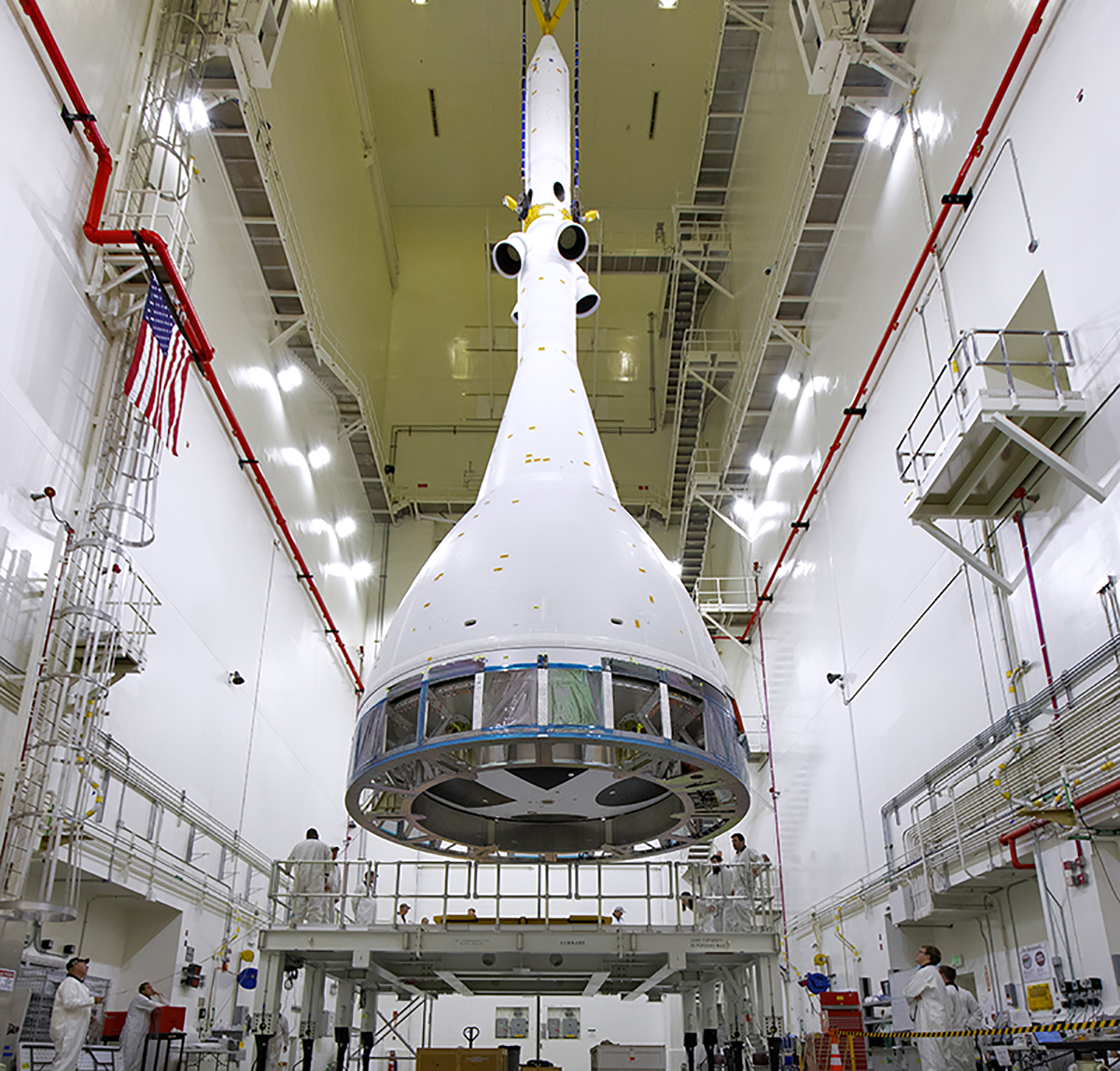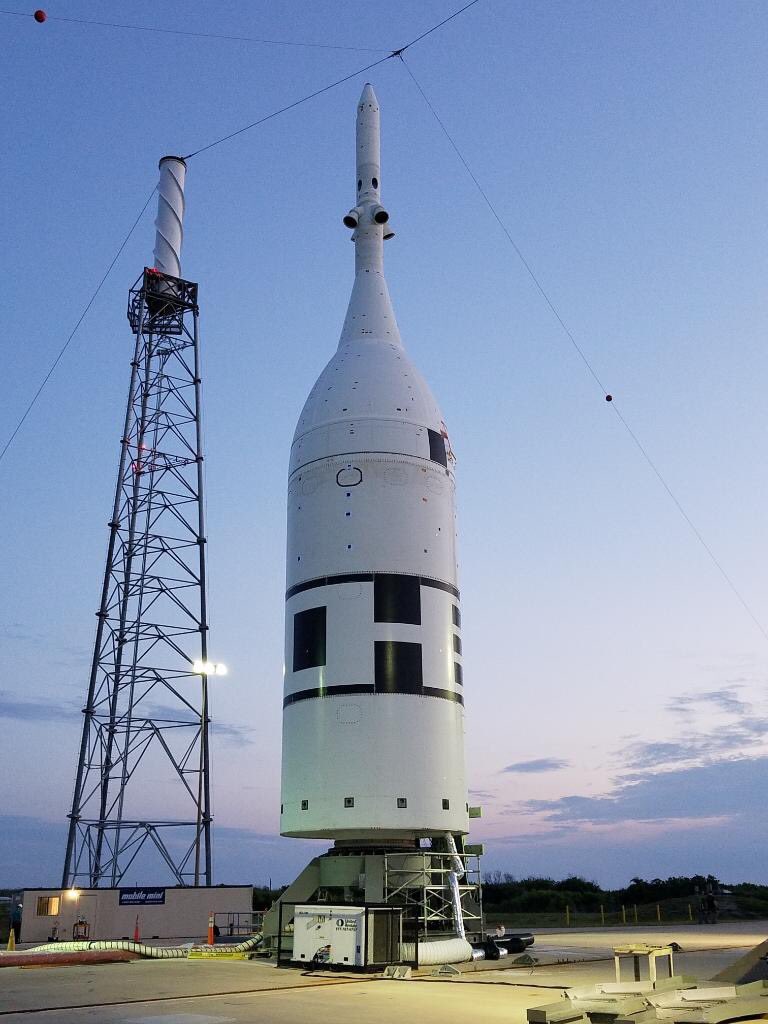
NASA is set to conduct an extremely important in-flight abort test Tuesday morning of their Orion Crew Capsule, to prove the spacecraft’s Launch Abort System (LAS) can pull astronauts away from a failing rocket during the violent ascent to space atop 8.8 million pounds of thrust from the agency’s huge Space Launch System (SLS).
Orion has been in development for well over a decade now as NASA’s deep-space crew capsule, originally envisioned for the now cancelled ARES/Constellation program. NASA is focused on a permanent human presence on the moon and staging area for Mars, and has tasked the Orion and SLS programs with the Artemis missions to land people on the moon by 2024.
Liftoff is scheduled for 7:00am Eastern time July 2, at the opening of a 4-hour “window”, and will mark the last major flight test before the first Orion launches atop SLS on the Artemis 1 mission.
FOLLOW OUR LAUNCH TRACKER FOR UPDATES AND LIVE COVERAGE OF THE FLIGHT TEST!
“In an abort scenario, the Launch Abort System and crew module essentially become its own aircraft,” says Chuck Dingell, chief engineer for Orion, who also was involved in early studies that examined Orion launch abort system options. “Not only do we want to get that craft away from a dangerous scenario quickly, but we also want to control it so that it flies in a direction as far as possible from the rocket.”
The 46,000-pound test article (Orion itself weighs 22,000 pounds) will launch from Cape Canaveral Air Force Station Launch Complex 46 atop a refurbished Peacekeeper intercontinental ballistic missile solid rocket motor, manufactured by Northrop Grumman and procured by the U.S. Air Force. It’s ideally suited for the mission because it can accurately emulate the SLS rocket while boosting the vehicle to its required test parameters.

At 55 seconds into flight and 31,000 feet, the 93-foot tall stack will surpass 1,000mph, at which time the abort sequence will be triggered and the LAS’ abort motor will fire with 400,000 pounds of thrust to pull the crew module away from the launch vehicle at 7Gs, gaining 2 miles of altitude in about 15 seconds before the attitude control motor fires to reorient the LAS to safely separate from the crew module. The LAS will then separate from the crew module using its jettison motor.
In a real-life scenario the parachutes would of course deploy to land, but the test vehicle on Tuesday will not use any, nor will it have a reaction control system with thrusters needed to help orient the capsule for a parachute-assisted descent and splashdown after the LAS is jettisoned, because the spacecraft’s parachute system has already been fully qualified through an extensive series of 17 developmental tests and 8 qualification tests completed at the end of 2018.
Instead, test data from 890 sensors will be sent in real-time to ground sites as well as recorded onboard by 12 data recorders, which will be ejected from the vehicle for quick retrieval by flight test personnel waiting on a boat nearby.

“The data is going to tell us the forces the astronauts will encounter if they do go through an abort during ascent,” said Carlos Garcia, the LAS Orion production lead and Flight Test Management Office representative for Kennedy.
Tuesday’s flight test is expected to last no more than 3 minutes. The key flight test objectives outlined by NASA are:
• Demonstrate abort capability at maximum aerodynamic pressure.
• Determine the stability characteristics and reorientation dynamics of the Launch Abort Vehicle while under active control of the attitude control motor.
• Obtain launch abort system structural loads data, assure LAS structural integrity, and obtain interface data for the LAS and crew module.
• Demonstrate, gather data from the crew module/service module separation mechanism.
• Demonstrate and gather data from the crew module and LAS separation mechanism.
• Gather information on the launch abort vehicle external environment—acoustic, aerodynamic, thermal and acceleration.
Such an abort capability is hoped to never be needed, but is absolutely critical in the rare instance it is, as was proven most recently in October 2018 when the abort system was initiated on the Russian Soyuz MS-10’s climb to space with American astronaut Nick Hague and Russian cosmonaut Alexey Ovchinin, who were en route to the International Space Station when their capsule conducted an abort and saved their lives.
It’s the last major flight test for Orion before it conducts an uncrewed flight test around the moon and back on the first SLS as soon as 2021, but since no crew will be onboard the LAS will be intert, making AA-2 the final flight test of the LAS before putting the first crew onboard for the Artemis 2 mission to the moon.
.
.
FOLLOW AmericaSpace on Facebook and Twitter!
.
.






